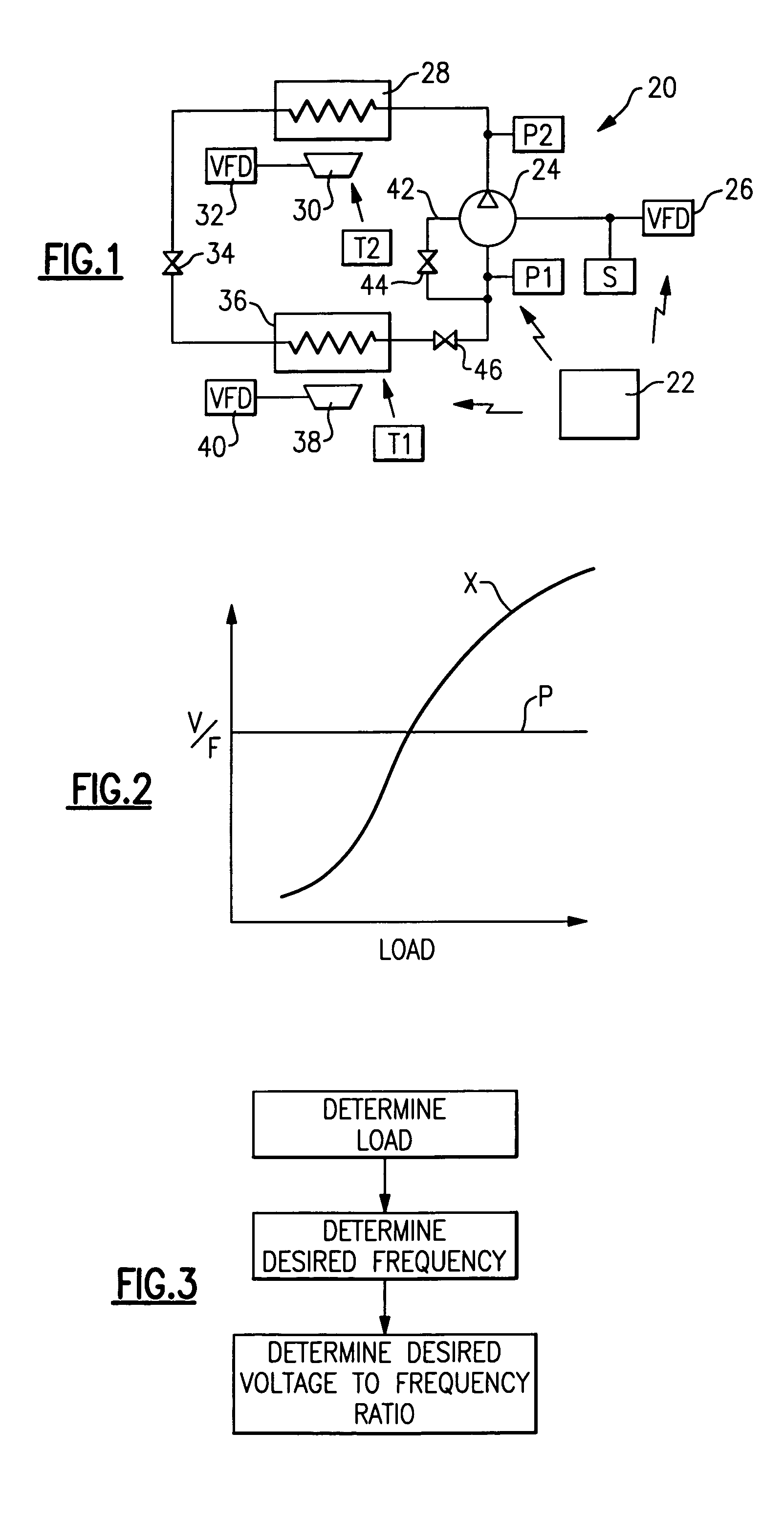Controlling a voltage-to-frequency ratio for a variable speed drive in refrigerant systems
a variable speed drive and voltage-to-frequency ratio technology, which is applied in the field of refrigerant systems, can solve the problems of unrealistic transformers, impractical voltage adjustments in prior systems, and desirably increasing frequency of operation, so as to maximize the strength of the motor, improve the efficiency of the compressor, and improve the effect of the compressor efficiency
- Summary
- Abstract
- Description
- Claims
- Application Information
AI Technical Summary
Benefits of technology
Problems solved by technology
Method used
Image
Examples
Embodiment Construction
[0020] A basic refrigerant system 20 is illustrated in FIG. 1. An electronic control 22 controls several features within the refrigerant system 20. In particular, a compressor 24 is powered by a motor having a variable speed drive (or variable frequency drive) 26 in communication with the control 22. The compressor compresses refrigerant and delivers it downstream to a condenser 28. A fan 30 moves air over the condenser 28 and is provided with a variable speed drive 32. Downstream of the condenser 28 is an expansion device 34, and downstream of the expansion device 34 is an evaporator 36. A fan 38 moves air over the evaporator 36 and is controlled by a variable speed drive 40. An optional suction modulation valve 46 modulates the flow of refrigerant entering the compressor 24. An optional unloader line 42 with an optional unloader valve 44 selectively allows partially or completely compressed refrigerant to be returned from the compressor 24 back to a suction line for the compressor...
PUM
 Login to View More
Login to View More Abstract
Description
Claims
Application Information
 Login to View More
Login to View More - R&D
- Intellectual Property
- Life Sciences
- Materials
- Tech Scout
- Unparalleled Data Quality
- Higher Quality Content
- 60% Fewer Hallucinations
Browse by: Latest US Patents, China's latest patents, Technical Efficacy Thesaurus, Application Domain, Technology Topic, Popular Technical Reports.
© 2025 PatSnap. All rights reserved.Legal|Privacy policy|Modern Slavery Act Transparency Statement|Sitemap|About US| Contact US: help@patsnap.com


